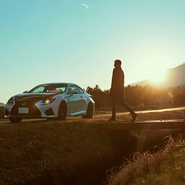- About
- Subscribe Now
- New York,
July 1, 2015

In an era of hyper-competitiveness and ambitious sales targets, customer loyalty for automotive brands is on the rise in the first quarter of 2015, according to a new report by IHS Automotive.
Many luxury automakers have been caught in a race to the bottom, unveiling lower priced models each year and flooding markets with product. In such an environment, it would seem that loyalty would decline, but it has risen to 52.8 percent in the United States.
"The increased number of different models within brands makes it easier for households that may need a different type of vehicle to maintain their loyalty," Tom Libby, manager of automotive loyalty and industry analysis at IHS Automotive.
"In addition, the increased popularity of leasing since the downturn has helped significantly as lessees are consistently more brand loyal compared to retail owners," he said.
For the report, "loyalty is determined when a household that owns a new vehicle returns to market and purchases or leases another new vehicle of the same make, model or manufacturer."
Runaway loyalty
The report notes that the number of models available in the U.S. market has risen by 33 percent from 2005 to 2015, driven partly by huge increases from luxury brands.
Brands such as Mercedes-Benz, Maserati and Audi are posting record sales numbers each month and climbing to new sales heights each year.
Mercedes-Benz CLA Instagram contest
How is this possible when the number of affluent consumers has remained flat for several years and consumers have become more cautious? Quite simply, the introduction of entry-level vehicles has exploded.
IHS Automotive argues that this entry-level trend has also boosted loyalty by giving existing consumers more affordable options when they reenter the market for a car. Rather than downgrading to a new, less expensive brand, consumers can downgrade to a car farther down the product line of a brand they know and trust.
Leasing has increased by 62 percent from 2005 to 2015 to a total of 22.5 percent of the market.
The rise in leasing has also been influenced by greater cooperation between original equipment manufacturers, or OEMS, and operating divisions.
Maserati's entry level Ghibli
Another contributing factor to loyalty is the vast improvement in digital marketing that has occurred. Compared to 10 years ago, automakers interact much more with consumers and, conversely, consumers more actively interact with brands. The current suite of digital touchpoints enhances the transparency and allure of a brand.
IHS also points to the drop in discontinued cars as an inadvertent catalyst for loyalty, because drivers of such cars must seek out another brand.
The number of households with discontinued brands on the market for a new car fell 49 percent from 2010 to 2014, from 240,208 to 123,388.
Next test
The struggle for automakers now will be how to attract consumers of competing brands. Just as digital is the key to increasing loyalty, it is also the helpful for poaching consumers.
Mobile now plays an integral role in every stage of the purchasing process for cars, according to a report by L2.
According to Nielsen, 63 percent of consumers also want in-car connectivity so that their mobile experience is never interrupted as they go about their day. Automakers that dismiss the power of mobile to guide purchases will no doubt suffer in the long term (see story).
Perhaps more so than other product categories, digital is reshaping the consumer journey to a new car. Consumers spend hours watching video, reading consumer reviews, learning technical features and taking all sorts of virtual tours before making a decision and heading to a pre-determined dealer (see story).
Final Take
Joe McCarthy, staff reporter on Luxury Daily, New York
Share your thoughts. Click here